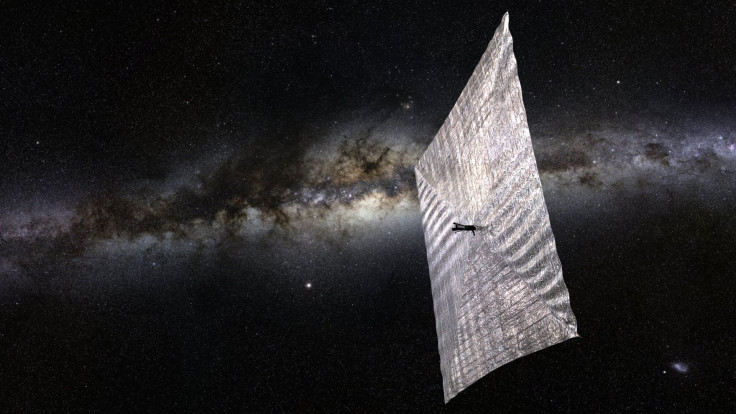Solar Sails Could Be Answer To Interstellar Travel, Researchers Claim
KEY POINTS
- Researchers developed a new type of solar sail
- Graphene sail is lighter than the current model
- Solar sails could be used to reach other star systems
Researchers have successfully developed and tested a new type of solar sail that’s lighter than the current models. According to the researchers, the new solar sail could be used to travel across space and into another star system.
Solar sails are a method of propulsion that uses natural light in space to propel a spacecraft. It is more efficient to use than traditional methods since it does not require fuel or chemical propellants.
Recently, researchers working at a facility in Germany were able to develop a new type of solar sail that’s lighter than the current model being used today. The version that they developed is made of graphene, which is only about one carbon atom thick. It is known as the thinnest material on Earth.
As noted by the researchers, their graphene sail is lighter and thinner than the one used by The Planetary Society for its LightSail project, which is made of a reflective polyester film known as Mylar.
Due to the characteristics of graphene, the researcher explained that it could be used to create massive sails.
“Making graphene is relatively simple and could be easily scaled up to kilometer-wide sails, though the deployment of a giant sail will be a serious challenge,” Santiago Cartamil-Bueno, lead researcher for the GrapheneSail team and head of the start-up firm SCALE Nanotech, said in a statement.
The researchers tested the graphene sail using a vacuum tower facility in Bremen, Germany. By eliminating the effect of gravity, the researchers tested how the sail would react under free-fall conditions.
Then, they used different lasers and pointed them at the sail, causing it to accelerate. As noted by the researchers, the sail moved as fast as a standard office elevator when it was propelled by the light from a one-watt laser.
Due to the success of their experiment, the researchers believe that graphene sails can be used for space exploration. Relying on light for propulsion would eliminate the need for fuel, which is one of the main factors that prevent the possibility of interstellar travel.
After all, in order to reach another star system, spacecraft need to use a lot of fuel. The weight of the fuel, however, would have an effect on the spacecraft’s flight capabilities.
“Dropping graphene and shooting it with lasers is fascinating,” Astrid Orr of the European Space Agency’s Human Spaceflight Research Program said in a statement. “To think that this research could help scientists to send instruments through the solar system and if one dares to dream, to distant star systems in years to come is the icing on the cake.”

© Copyright IBTimes 2024. All rights reserved.





















